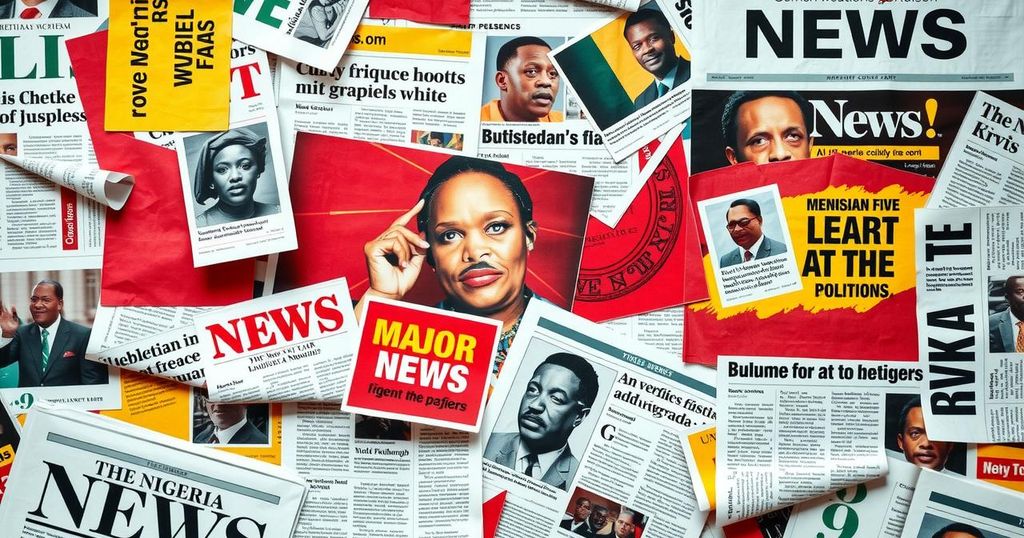Mass Protests Erupt Across Iran and Yemen Against Israeli Attacks in Lebanon and Gaza
On September 27, 2024, large-scale protests erupted in Iran and Yemen against Israeli military actions in Lebanon and Gaza. Organized by Iranian authorities to support Hezbollah and decry Israeli violence, these demonstrations saw thousands gathering, chanting slogans, and burning flags. Concurrently, protests took place in Bahrain, though under strict control. The increased tensions follow a recent attack by Hamas on Israel and subsequent retaliatory assaults, marking the most significant conflict since Lebanon’s civil war.
On September 27, 2024, tens of thousands of individuals participated in protests across various Iranian cities as well as in the rebel-controlled capital of Yemen, Sanaa, in response to Israeli military actions in Lebanon and Gaza. These protests were organized following a call from Iranian authorities that urged citizens to rally for the Iran-supported Hezbollah movement and to denounce what they characterized as the ‘barbaric crimes of the Zionist regime’ in Palestine, as reported by the state news agency IRNA. Hezbollah is a key player in the so-called ‘axis of resistance,’ which consists of Iran-affiliated armed factions throughout the Middle East, known for targeting both Israel and U.S. forces in solidarity with Hamas, the Palestinian militant group. Additionally, the Houthi rebels in Yemen organized their own large-scale demonstration in Sanaa, coinciding with missile strikes directed at Israel just a day prior. In Tehran, after the Friday prayers, demonstrators gathered around Enghelab Square, exhibiting portraits of Hezbollah leader Hassan Nasrallah along with Palestinian and Hezbollah flags. The protesters vocally expressed their anti-Israel sentiments, chanting slogans such as “Israel is destroyed. Lebanon is victorious,” while condemning what they described as a ‘bloodbath in Lebanon.’ The demonstrations involved the burning of both Israeli and American flags. Footage broadcasted by state television showed similar protests taking place in other cities including Semnan, Qom, Kashan, Kermanshah, Shiraz, and Bandar Abbas. In Sanaa, the crowd, waving rifles and placards, echoed support for the Lebanese people, with Huthi supporter Mortada al-Mutawkil stating, “We say to our brothers in Lebanon that you will be victorious, God willing.” Another protester, Mohammed Mushki, asserted, “No matter how long the war lasts and no matter how big it is, we are on their side, all the Yemeni people, on the side of the Lebanese and Palestinian people until victory, God willing.” Simultaneously, demonstrations occurred in Bahrain, albeit under tighter governmental control as the nation is an ally of Israel. Here, a few hundred people marched in a village north of Manama in solidarity with Gaza and Lebanon, whilst others in the capital voiced calls for an end to ties with Israel, chanting, “The people demand an end to normalization.” The escalated hostilities were ignited after Hamas launched an attack on Israel on October 7, leading to intensified military responses from Israel, including frequent cross-border fire from Hezbollah. Israeli operations in Lebanon since September 23 have resulted in hundreds of casualties, marking the most severe violence since Lebanon’s civil war that lasted from 1975 to 1990. Amidst this turmoil, analysts observe that Iran is balancing its support for Hezbollah while trying to avoid direct involvement in a larger conflict, which would likely play into its adversaries’ strategies.
The protests in Iran and Yemen emerged from a broader context of escalating violence in the Middle East, particularly following Hamas’s initial assault on Israel, which triggered a significant military response and retaliatory actions from Lebanon and Gaza. The conflict has reignited longstanding tensions involving Iran, Hezbollah, and the Israeli state, amidst a backdrop of regional resistance movements that have historically characterized Israeli relations with its neighbors. The recent protests symbolize a consolidation of sentiments against Israeli actions while reinforcing the solidified alliances between Iranian and Yemeni factions aligned against Israel. As violence escalates, the events underscore the delicate geopolitical landscape where Iran seeks to maintain its influence over Hezbollah without becoming embroiled in a full-scale war.
In summary, widespread protests held in Iranian cities and the Yemeni capital of Sanaa express profound disapproval of Israeli actions in Lebanon and Gaza, stemming from recent escalations in violence. These protests, united by the call to support Hezbollah and denounce Israeli military operations, highlight the fervent anti-Israel sentiment present in the region, further complicating the geopolitical dynamics as Iran navigates its role in supporting allied groups while avoiding a direct conflict.
Original Source: www.thehindu.com




Post Comment